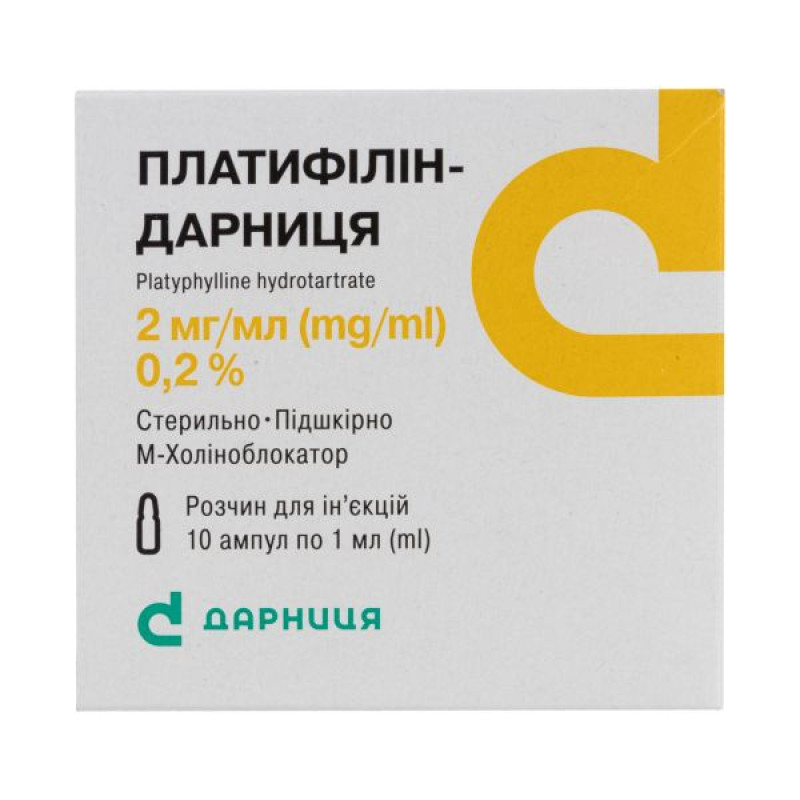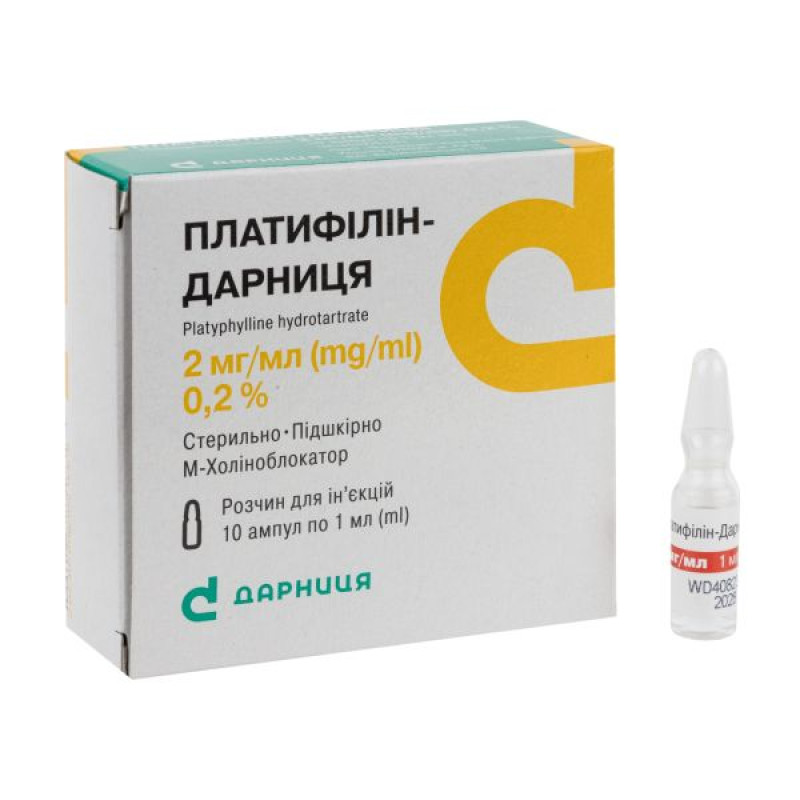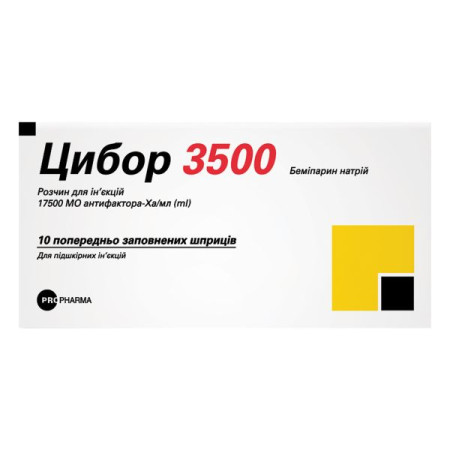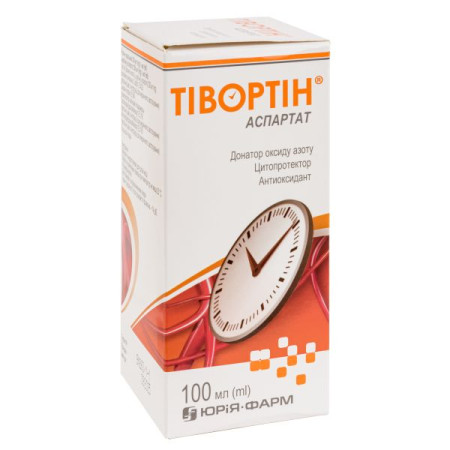Platyphyllin-Darnitsa solution for injection 0.2% ampoule 1 ml No. 10

Instructions Platyphyllin-Darnitsa solution for injection 0.2% ampoule 1 ml No. 10
Composition
active ingredient: platyphylline hydrotartrate;
1 ml of solution contains: platifillin hydrotartrate 2 mg;
excipient: water for injections.
Dosage form
Solution for injection.
Main physicochemical properties: clear colorless liquid.
Pharmacotherapeutic group
Drugs used for functional bowel disorders.
ATX code A03A X.
Pharmacological properties
Pharmacodynamics.
Platyphylline is a natural alkaloid that has an M-cholinoblocking effect. Compared to atropine, it has a lesser effect on peripheral M-cholinoreceptors (in terms of its antispasmodic effect on smooth muscle cells of the gastrointestinal tract and circular muscle of the iris, it is 5-10 times weaker than atropine). By blocking M-cholinoreceptors, it disrupts the transmission of nerve impulses from postganglionic cholinergic nerves to effector organs and tissues innervated by them (heart, smooth muscle organs, exocrine glands). It partially blocks H-cholinoreceptors. The cholinergic effect is more pronounced against the background of increased tone of the parasympathetic autonomic nervous system or the action of M-cholinomimetics. To a lesser extent than atropine, it causes tachycardia, especially when used in large doses. By reducing the influence of the vagus nerve, it improves cardiac conduction, increases myocardial excitability, and increases cardiac output. It has a ganglion-blocking and direct myotropic antispasmodic effect, causing dilation of small skin vessels. In high doses, it suppresses the vasomotor center and blocks sympathetic ganglia, resulting in vasodilation and a decrease in blood pressure (mainly when administered intravenously). It inhibits the secretion of endocrine glands less than atropine, causing a pronounced decrease in smooth muscle tone, amplitude and frequency of peristaltic contractions of the stomach, duodenum, small and large intestines, and a moderate decrease in gallbladder tone (in individuals with hyperkinesia of the biliary tract). With hypokinesia, the gallbladder tone increases to normal. Causes relaxation of the smooth muscles of the uterus, urinary bladder, and urinary tract. Due to its antispasmodic action, it eliminates pain. It relaxes the smooth muscles of the bronchi when they spasm, caused by increased vagal tone or cholinomimetics, increases respiratory volume, and suppresses the secretion of bronchial glands. When administered parenterally, it causes pupil dilation due to relaxation of the circular muscle of the iris. At the same time, intraocular pressure increases and accommodation paralysis occurs (relaxation of the ciliary muscle of the ciliary body). Compared to atropine, the effect on accommodation is less pronounced and shorter. It excites the brain and respiratory center, to a greater extent - the spinal cord (in high doses, convulsions, depression of the central nervous system, vasomotor and respiratory centers are possible). Penetrates the blood-brain barrier.
Pharmacokinetics.
After parenteral administration, it quickly and easily penetrates histohematological barriers, cellular and synaptic membranes. When administered in large doses, it accumulates in the central nervous system in significant concentrations. In the body, it undergoes hydrolysis with the formation of platinecin and platinecinic acid. It is excreted by the kidneys with urine and intestines with feces. When used correctly (doses, intervals between administrations) it does not accumulate.
Indication
As part of complex therapy: gastroduodenitis, functional dyspepsia, pylorospasm, cholecystitis, cholelithiasis, intestinal colic, renal colic, biliary colic. Bronchial asthma (for the prevention of bronchospasm), bronchorrhea. Algodysmenorrhea. Spasm of cerebral arteries. Angiotrophoneurosis.
Contraindication
Hypersensitivity to the components of the drug. Cardiovascular diseases in which an increase in heart rate may be undesirable: atrial fibrillation, tachycardia, chronic heart failure, ischemic heart disease, mitral stenosis, severe arterial hypertension. Acute bleeding. Thyrotoxicosis. Hyperthermic syndrome. Gastrointestinal diseases accompanied by obstruction (achalasia of the esophagus, pyloric stenosis, intestinal atony). Glaucoma. Liver and kidney failure. Myasthenia gravis. Urinary retention or tendency to it. Brain damage.
Interaction with other medicinal products and other types of interactions
When used simultaneously with haloperidol in patients with schizophrenia, a decrease in the antipsychotic effect is possible.
Enhances the sedative and hypnotic effects of phenobarbital, pentobarbital, magnesium sulfate and etaminal sodium. Eliminates bradycardia caused by verapamil; nausea, vomiting and bradycardia caused by morphine.
Blocks the effects of proserin.
Enhances the effects of H2-histamine blockers administered orally, digoxin and riboflavin (slows down peristalsis and improves absorption).
M-cholinoblockers, amantadine, haloperidol, phenothiazine, MAO inhibitors, tricyclic antidepressants, benzathine, quinidine sulfate, isoniazid, some antihistamines (diphenhydramine), disopyramide, novocainamide increase the risk of developing anticholinergic side effects.
Shows antagonism with cholinesterase inhibitors. Do not use simultaneously with anticholinesterase drugs.
Morphine enhances the suppressive effect on the cardiovascular system, MAO inhibitors - positive chrono- and bathmotropic effects, cardiac glycosides - positive bathmotropic effect, quinidine, novocainamide - anticholinergic effect.
For pain associated with smooth muscle spasms, the effect of the drug is enhanced by analgesics, sedatives, and tranquilizers; for vascular spasms, antihypertensives and sedatives.
Application features
Use with caution in patients with prostatic hypertrophy or urinary tract obstruction, Down syndrome, cerebral palsy; in reflux esophagitis, hiatal hernia combined with reflux esophagitis; in nonspecific ulcerative colitis, megacolon; in patients over 40 years of age due to the possible manifestation of undiagnosed glaucoma; in autonomic (autonomic) neuropathy; in elderly or debilitated patients; in chronic lung diseases that occur with low production of thick sputum that is difficult to separate, or in reverse obstruction. In patients with xerostomia, prolonged use may cause a further decrease in salivation
Use during pregnancy or breastfeeding
During pregnancy or breastfeeding, the drug should be used with caution only if the expected benefit to the mother outweighs the potential risk to the fetus or child.
Ability to influence reaction speed when driving vehicles or other mechanisms
When using the drug, you should refrain from driving a car or performing other potentially dangerous activities that require increased attention and speed of psychomotor reactions.
Method of administration and doses
Apply subcutaneously.
Adults and children over 15 years of age should be administered 1-2 ml of solution 1-2 times a day to relieve spastic pain, prolonged attacks of bronchial asthma, cerebral and peripheral angiospasms.
For course treatment, administer 1-2 ml subcutaneously 1-2 times a day for 10-15-20 days.
Single and daily doses, frequency of administration are set individually by the doctor depending on the indications and age of the patient.
Maximum doses for adults: single dose – 10 mg, daily dose – 30 mg.
Children
The drug should be used in children over 15 years of age.
Overdose
Symptoms: paralytic intestinal obstruction, acute urinary retention (in patients with benign prostatic hyperplasia), accommodation paralysis, increased intraocular pressure; dryness of the mucous membrane of the mouth, nose, throat; difficulty swallowing, mydriasis (up to complete disappearance of the iris), tremor, convulsions, hyperthermia, excitation of the CNS with its subsequent depression, depression of the respiratory and vasomotor centers.
Treatment: forced diuresis, administration of cholinesterase inhibitors (physostigmine, galantamine or proserin), which weaken intestinal paresis and reduce tachycardia. In case of moderate excitement and mild convulsions - administration of magnesium sulfate, in severe cases - sodium oxybutyrate, oxygen therapy, artificial ventilation of the lungs. In case of life-threatening tachycardia - quinidine sulfate, propranolol.
Adverse reactions
On the part of the gastrointestinal tract: dry mouth, thirst, taste disturbance, dysphagia, decreased intestinal motility up to atony, decreased tone of the biliary tract and gallbladder.
Renal and urinary disorders: difficulty and retention of urination.
From the cardiovascular system: tachycardia, arrhythmia, including extrasystole, facial flushing, hot flashes, decreased blood pressure.
From the nervous system: headache, dizziness, dysarthria, excitation of the central nervous system, insomnia, anxiety, amnestic syndrome.
From the organs of vision: mydriasis, photophobia, accommodation paralysis, increased intraocular pressure.
On the part of the respiratory system and mediastinal organs: a decrease in secretory activity and bronchial tone, which leads to the formation of viscous sputum that is difficult to cough up.
Skin and subcutaneous tissue disorders: skin rash, urticaria, exfoliative dermatitis, dry skin, decreased sweating.
Immune system disorders: anaphylactic reactions, anaphylactic shock.
Expiration date
5 years.
Storage conditions
Store in the original packaging at a temperature not exceeding 25 ° C. Do not freeze. Keep out of the reach of children.
Incompatibility.
Do not mix with other medicines. Use only the recommended diluent.
Packaging
1 ml in an ampoule; 5 ampoules in a contour blister pack; 2 contour blister packs in a pack; 10 ampoules in a box.
Vacation category
According to the recipe.
Producer
Location of the manufacturer and its business address
Ukraine, 02093, Kyiv, Boryspilska St., 13.
There are no reviews for this product.
There are no reviews for this product, be the first to leave your review.
No questions about this product, be the first and ask your question.











